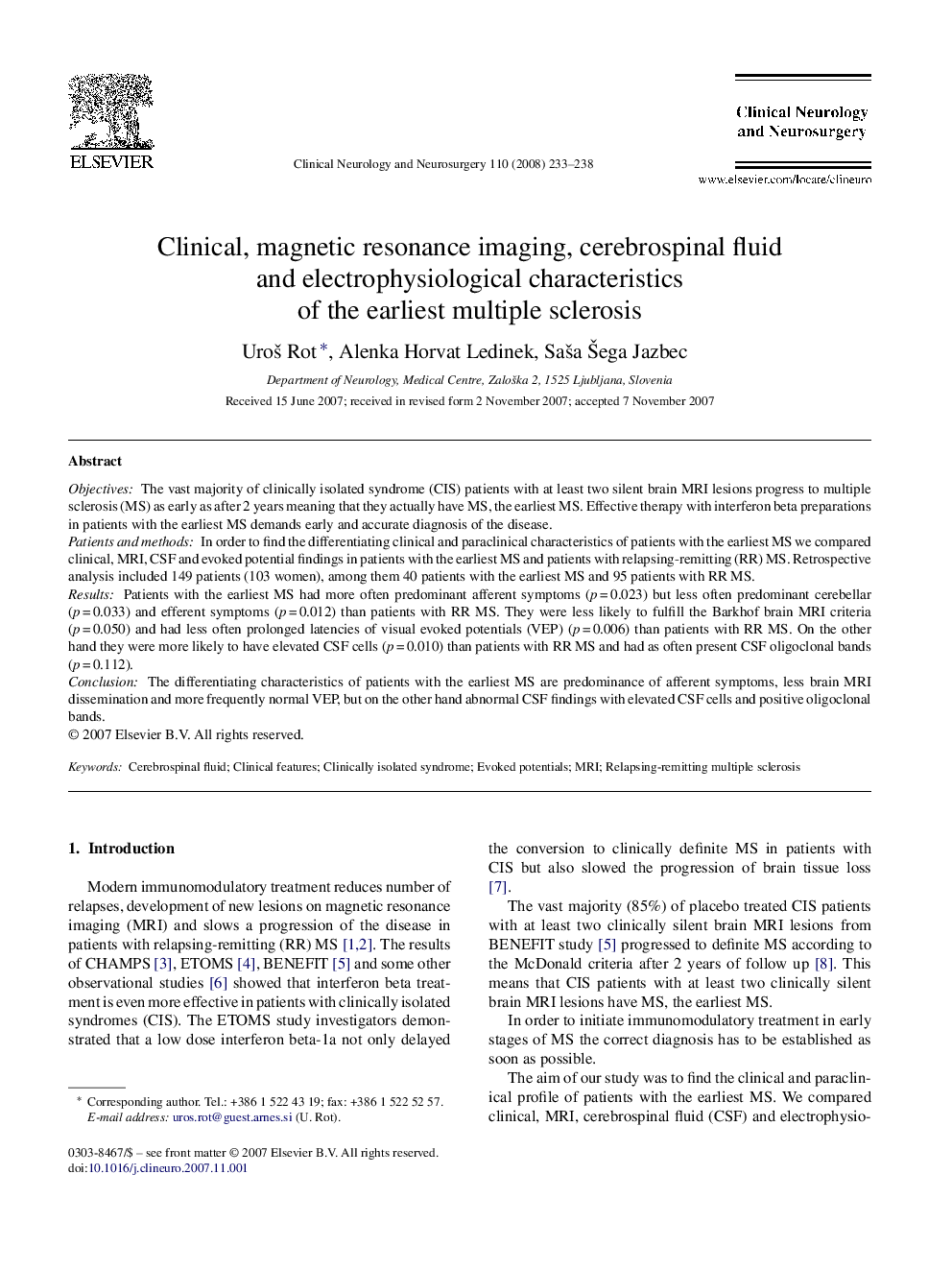| Article ID | Journal | Published Year | Pages | File Type |
|---|---|---|---|---|
| 3041726 | Clinical Neurology and Neurosurgery | 2008 | 6 Pages |
ObjectivesThe vast majority of clinically isolated syndrome (CIS) patients with at least two silent brain MRI lesions progress to multiple sclerosis (MS) as early as after 2 years meaning that they actually have MS, the earliest MS. Effective therapy with interferon beta preparations in patients with the earliest MS demands early and accurate diagnosis of the disease.Patients and methodsIn order to find the differentiating clinical and paraclinical characteristics of patients with the earliest MS we compared clinical, MRI, CSF and evoked potential findings in patients with the earliest MS and patients with relapsing-remitting (RR) MS. Retrospective analysis included 149 patients (103 women), among them 40 patients with the earliest MS and 95 patients with RR MS.ResultsPatients with the earliest MS had more often predominant afferent symptoms (p = 0.023) but less often predominant cerebellar (p = 0.033) and efferent symptoms (p = 0.012) than patients with RR MS. They were less likely to fulfill the Barkhof brain MRI criteria (p = 0.050) and had less often prolonged latencies of visual evoked potentials (VEP) (p = 0.006) than patients with RR MS. On the other hand they were more likely to have elevated CSF cells (p = 0.010) than patients with RR MS and had as often present CSF oligoclonal bands (p = 0.112).ConclusionThe differentiating characteristics of patients with the earliest MS are predominance of afferent symptoms, less brain MRI dissemination and more frequently normal VEP, but on the other hand abnormal CSF findings with elevated CSF cells and positive oligoclonal bands.
